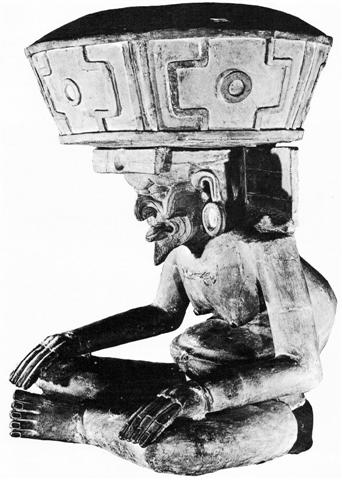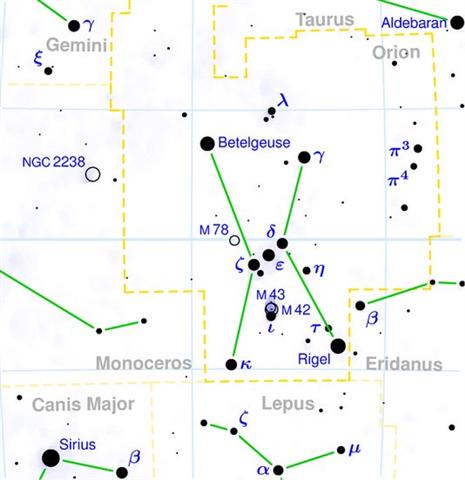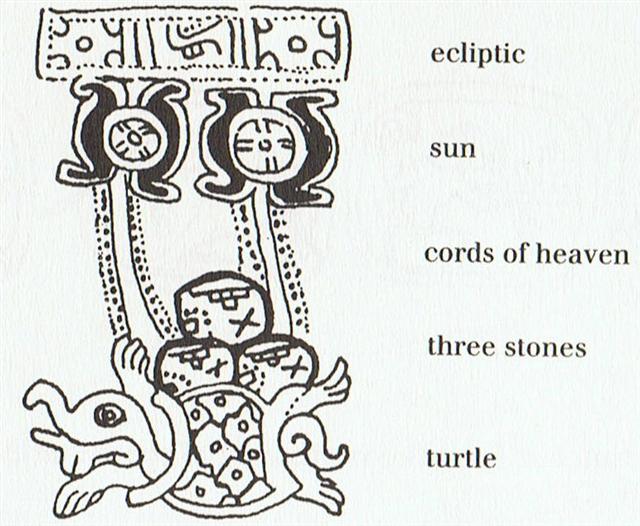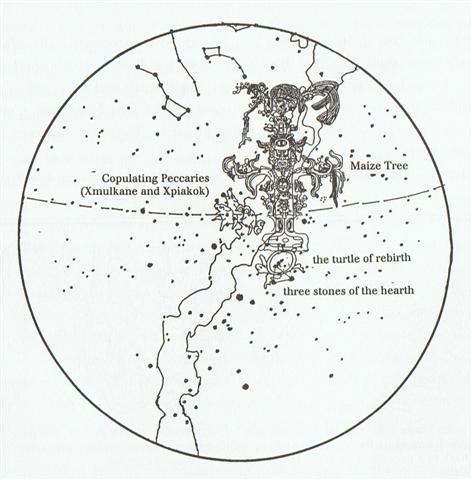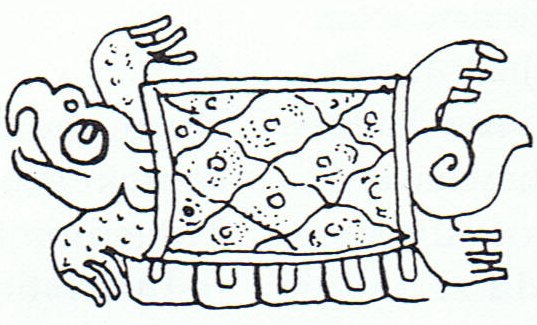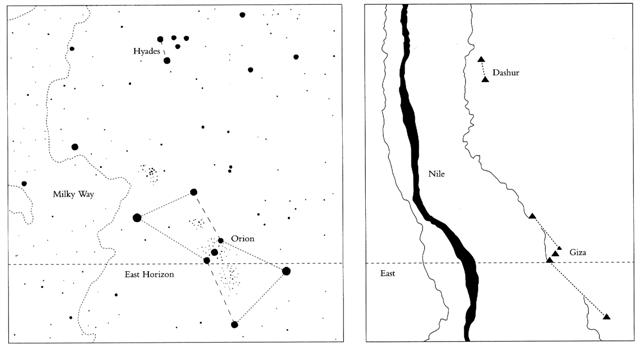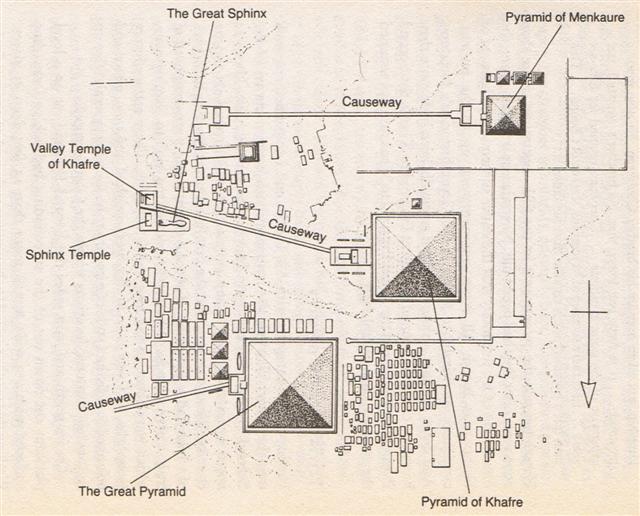Once again. Fire was aquired by shooting an arrow into the navel (center) of the sea, causing driftwood to come ashore, i.e. a suitable material to drill for 'earthly' fire. ... For three days all household fires remained extinct as a preparation for the solemn renewal of the fire, which took place on the fifth or sixth day after the winter solstice. The ceremony was performed with great pomp by the same officials who procured the new fire from heaven by reflecting the sun's rays either from a metal mirror or from a crystal on dry moss. Fire thus obtained is called by the Chinese heavenly fire and its use is enjoined in sacrifices: whereas fire elicited by the friction of wood is termed by them earthly fire, and its use is prescribed for cooking and other domestic purposes ... The sky was high above and water was drawn down by gravitation to the ocean below. Flames from fires went in the other direction - upwards - and therefore they had ultimately to be produced somewhere far down, i.e. below the ocean, where the pole (the 'arrow') produced it by friction.
However, humanity did not possess fire until it was stolen, at a time in the year which could have corresponded to spring equinox. ... Then the old man was glad. He kindled a large fire, and as he wanted to keep it to himself, he built a house with a door which snapped up and down like jaws and killed everybody that wanted to get in. But the people knew that he was in possession of fire, and the stag determined to steal it for them. He took resinous wood, split it and stuck the splinters in his hair. Then he lashed two boats together, covered them with planks, danced and sang on them, and so he came to the old man's house. He sang: 'O, I go and will fetch the fire.' The old man's daughter heard him singing, and said to her father: 'O, let the stranger come into the house; he sings and dances so beautifully.' The stag landed and drew near the door, singing and dancing, and at the same time sprang to the door and made as if he wanted to enter the house. Then the door snapped to, without however touching him. But while it was again opening, he sprang quickly into the house. Here he seated himself at the fire, as if he wanted to dry himself, and continued singing. At the same time he let his head bend forward over the fire, so that he became quite sooty, and at last the splinters in his hair took fire. Then he sprang out, ran off and brought the fire to the people ... ... All was now ready for departure except that there was no fire in the smithy. The ancestor slipped into the workshop of the great Nummo, who are Heaven's smiths, and stole a piece of the sun in the form of live embers and white-hot iron. He seized it by means of a 'robber's stick' the crook of which ended in a slit, open like a mouth. He dropped some of the embers, came back to pick them up, and fled towards the granary; but his agitation was such that he could no longer find the entrances. He made the round of it several times before he found the steps and climbed onto the flat roof, where he hid the stolen goods in one of the skins of the bellows, exclaiming: 'Gouyo!', which is to say. 'Stolen!'. The word is still part of the language, and means 'granary'. It is a reminder that without the fire of the smithy and the iron of hoes there would be no crops to store ... The Stag was not far from the Rainbow, which indicated where the Sun light broke through the curtains of rain:
Bow and Arrow were far down, below the Little Twins (Mas-tab-ba-tur-tur). ...Al Maisān, the title of γ Geminorum [Alhena], by some error of Firuzabadi was applied to this star [λ Orionis] as Meissa, and is now common for it. Al Sufi called it Al Tahāyī; but Al Ferghani and Al Tizini knew it as Rās al Jauzah, the Head of the Jauzah, which it marks. The original Arabic name, Al Hak'ah, a White Spot, was from the added faint light of the smaller φ¹and φ² in the background, and has descended to us as Heka and Hika. These three stars were another of the Athāfiyy [tripods used for cooking] of the Arabs; and everywhere in early astrology were thought, like all similar groups, to be of unfortunate influence in human affairs. They constituted the Euphratean lunar station Mas-tab-ba-tur-tur, the Little Twins, a title also found for γ and η Geminorum [Alhena respectively Tejat Prior]; and individually were important stars among the Babylonians, rising to them with the sun at the summer solstice, and, with α [Betelgeuze] and γ [Bellatrix], were known as Kakkab Sar, the Constellation of the King ...
Thus there could be reason to read the beginning of line Ga3 together with the Mayan vision of three stones on a turtle, which could refer to how after Heka had 'covered up' the Head of the Old Sun a new generation would emerge from down below. ... In looking at this triangle nobody would think that the moon could be inserted in it; but as the distance from λ to φ¹ is 27', and the distance from φ¹ to φ² is 33', it is a positive fact; the moon's mean apparent diameter being 31' 7''. This illusion, prevalent in all ages, has attracted the attention of many great men; Ptolemy, Roger Bacon, Kepler, and others having treated of it. The lunar disc, seen by the naked eye of an uninstructed observer, appears, as it is frequently expressed 'about the size of a dinner-plate', but should be seen as only equal to a peppercorn ...
The three hearth stones on the turtle of rebirth formed a replica down below of the Kakkab Sar triangle of the King higher up, which was defined by Betelgeuze (α), Heka (λ), and Bellatrix (γ). By the way, lambda has a form which looks like the Cancer configuration:
And Gemini can be perceived as a rectangular form, not much different from the henua (earth) type of glyph.
Here a 'virgin earth' was each year recreated from a pair of 'driftwood pieces' (toko-rua) and here, anciently, the Twins had waded ashore. ... The old man gave the Raven two small sticks, like gambling sticks, one black, one multicoloured. He gave him instructions to bite them apart in a certain way and told him to spit the pieces at one another on the surface of the sea. The Raven climbed back up the pole, where he promptly did things backwards, just to see if something interesting would occur, and the pieces bounced apart. It may well be some bits were lost. But when he gathered what he could and tried again - and this time followed the instructions he had been given - the pieces stuck and rumpled and grew to become the mainland and Haida Gwaii ... ... The earth rises up from the sea again, and is green and beautiful and things grow without sowing. Vidar and Vali are alive, for neither the sea nor the flames of Surt have hurt them and they dwell on the Eddyfield, where once stood Asgard. There come also the sons of Thor, Modi and Magni, and bring along his hammer. There come also Balder and Hoder from the other world. All sit down and converse together. They rehearse their runes and talk of events of old days. Then they find in the grass the golden tablets that the Aesir once played with. Two children of men will also be found safe from the great flames of Surt. Their names, Lif and Lifthrasir, and they feed on the morning dew and from this human pair will come a great population which will fill the earth. And strange to say, the sun, before being devoured by Fenrir, will have borne a daughter, no less beautiful and going the same ways as her mother ... Between Taurus and Gemini the Orion constellation was below the ecliptic, and here a new cycle would be recreated on the Turtle - which we can recognize from its dorsal pattern in the latter of the Mayan illustrations above.
The lower (below the equator and below the Milky Way) 'stone' triangle was formed by κ (Saiph), ζ (Alnitak), and β (Rigel). Notably the 'arrow' formed by the Belt stars in the center of the Orion constellation culminated half a year away from the glyphs early in line Ga3:
... Menkaure was allegedly a much more benevolent Pharaoh than his predecessors. According to legends related by Herodotus, he wrote the following: This Prince (Mycerinus) disapproved of the conduct of his father, reopened the temples and allowed the people, who were ground down to the lowest point of misery, to return to their occupations and to resume the practice of sacrifice. His justice in the decision of causes was beyond that of all the former kings. The Egyptians praise him in this respect more highly than any other monarchs, declaring that he not only gave his judgements with fairness, but also, when anyone was dissatisfied with his sentence, made compensation to him out of his own purse and thus pacified his anger. The Gods however ordained that Egypt should suffer tyrannical rulers for a hundred and fifty years according to this legend. Herodotus goes on: An oracle reached him from the town of Buto, which said 'six years only shalt thou live upon this earth, and in the seventh thou shalt end thy days'. Mycerinus, indignant, sent an angry message to the oracle, reproaching the god with his injustice - 'My father and uncle,' he said 'though they shut up the temples, took no thought of the gods and destroyed multitudes of men, nevertheless enjoyed a long life; I, who am pious, am to die soon!' There came in reply a second message from the oracle - 'for this very reason is thy life brought so quickly to a close - thou hast not done as it behoved thee. Egypt was fated to suffer affliction one hundred and fifty years - the two kings who preceded thee upon the throne understood this - thou hast not understood it'. Mycerinus, when this answer reached him, perceiving that his doom was fixed, had lamps prepared, which he lighted every day at eventime, and feasted and enjoyed himself unceasingly both day and night, moving about in the marsh-country and the woods, and visiting all the places he heard were agreeable sojourns. His wish was to prove the oracle false, by turning night into days and so living twelve years in the space of six ...
|
||||||||||||||||||||||||||||||||||||||||||||||||||||||||||||||||||||||||||||||||||||||||||||||||||||||||||||||||||||||||||||||||||||||||||||||||||||||||||||
